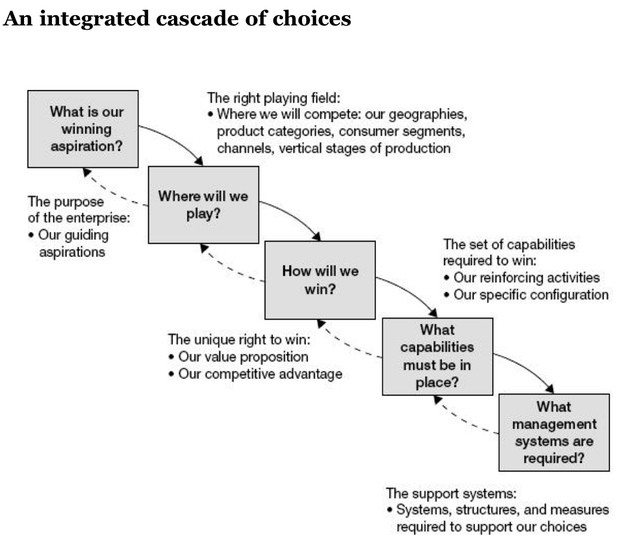Introduced in 2013 by A.G. Lafley and Roger Martin, Playing to Win is the business strategy framework we use at Greenhawk. It’s unlike traditional strategic planning processes where the emphasis is on creating a perfect, detailed articulation of the company’s future. In Playing to Win, we make an integrated set of five choices that set the stage for effective action across the organisation:
- What is our winning aspiration?
- Where will we play?
- How will we win?
- What capabilities must be in place?
- What management systems are required?

The framework is based on three key ideas:
1. Strategy is about choices.
To win, a company must choose to do some things and not others. To compete effectively, an organisation must make choices about what it will and won’t do, who it will and won’t serve, and where it will and won’t devote resources. When it fails to make choices, a company attempts to be all things to all people and winds up being largely mediocre.
Making choices can feel daunting, of course. We all like to keep our options open. But without making choices, we can’t win. We can’t provide enough value to customers, give meaning to employees, or generate the ongoing profits that sustain an organisation over the long term. In the Playing to Win framework, strategy is an integrated set of choices that uniquely positions the firm in its industry to create sustainable advantage and superior value relative to the competition.
2. Strategy is about increasing our odds of success, not guaranteeing it.
In strategy, there are no absolute answers. We’re dealing with the future, and there is no way to eliminate uncertainties around customer response and competitor reaction, no matter how much planning and analysis we do. In the end, building a strategy isn’t about achieving perfection; it’s about improving our odds. The goal of the Playing to Win process is to help us generate and think through strategic possibilities, increasing our confidence in the choices we make.
3. Strategy-making combines rigour and creativity.
Crafting a strategy requires both the creativity to generate new possibilities and the rigour to test them.
If you’re keen to learn more, this 9-minute video is a great place to start: “A Plan Is Not a Strategy” by Roger Martin, HBR.

